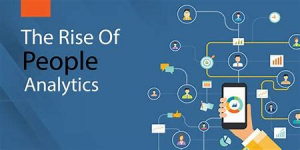 Why do some push themselves to deliver the best and others are good with good enough? What is it about the human psyche that pushes some to strive beyond good to excellent? Psychologists tell us that it is a convoluted web of past experiences, motivation and neurological make-ups that churn out individuals who constantly go above and beyond in every role they have in life, who are driven by achievement and being the best. There are multiple reasons for this drive to excel and not all of them may be what you would initially think.
Why do some push themselves to deliver the best and others are good with good enough? What is it about the human psyche that pushes some to strive beyond good to excellent? Psychologists tell us that it is a convoluted web of past experiences, motivation and neurological make-ups that churn out individuals who constantly go above and beyond in every role they have in life, who are driven by achievement and being the best. There are multiple reasons for this drive to excel and not all of them may be what you would initially think.
Some psychologists tell us that these individuals are not so driven by the need to succeed, but by the need not to fail.
In fact, it is not the actual failure that they are so opposed to, but the shame that accompanies it. These are individuals who usually care deeply about what others think of them. Certain messages are conveyed to the self when failure occurs, which motivate success in an attempt to avoid acknowledging them. Failure can lead one to have a sense of unworthiness and an expectation of abandonment or an unrealistic fear of complete ruin. In a paradoxical way, the desire to avoid a negative state or emotional experience is the impetus for achievement of your goals and great success.
Neurologists provide us with explanations that are rooted in the brain. When it comes specifically to motivation, one of the most important neurotransmitters is dopamine. Dopamine is one of the chemical signals that passes information from one neuron to the next. When dopamine is released from the first neuron, it floats between the synapses. Since dopamine is released before we ever receive a reward, its real job is to encourage us to act. It motivates us to achieve, while avoiding something negative. A team of Scientists at Vanderbilt found that the “go-getters” simply had higher levels of dopamine in the reward and motivation portions of the brain.
Those who do not hold advanced degrees with the letters Ph.D. or M.D. after their names suggest that the reasons for success are much simpler. People who are successful make decisions and choose to take action more quickly. This increase their chances of success simply because they have tried more options. They convince themselves to take on tasks they don’t want to do. Instead of avoiding them, they just power through them. Inevitably this increases their odds of a successful outcomes. Just getting started in half the battle. Prioritization and focus also play a role. Those individuals who are able to look down a list of to-do’s and quickly prioritize what is the most important, and then able to focus their attention on that task until completion, again increase their odds of success. Distraction is a key reason many people don’t succeed. They choose to be a little bit accomplished in a number of different areas, but never follow through to the end on the one important goal. Lastly, a big dose of positivity can go a long ways to accomplishing what you set out to do. People who are successful see themselves as successful at the beginning of the project. They begin with the end in mind and have a good grasp on what success is going to look like.
Whether you believe success is driven by the fear of shame associated with failure, the amount of dopamine in certain centers of the brain or by the simple decisions you make on a daily basis, remember, if you are not willing to risk the usual, you will have to settle for the ordinary. Jim Rohn


